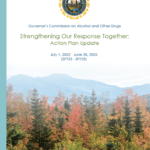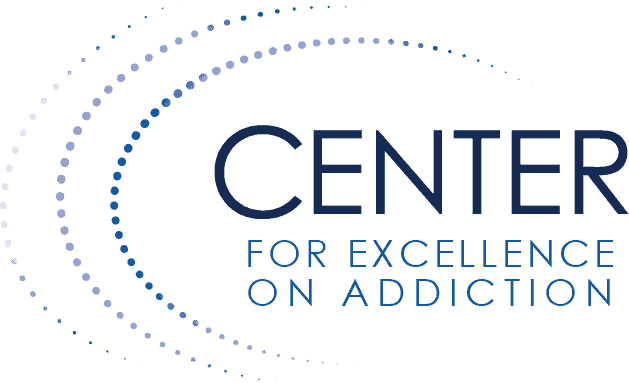NH Governor’s Commission Action Plan Dashboard
Our Plan
 Strengthening Our Response Together is the NH Governor’s Commission on Alcohol and other Drugs’ Action Plan to comprehensively address our state’s addiction crisis. This updated three-year strategic plan serves as a blueprint for shared efforts with a focus on alignment, coordination, innovation and accountability.
Strengthening Our Response Together is the NH Governor’s Commission on Alcohol and other Drugs’ Action Plan to comprehensively address our state’s addiction crisis. This updated three-year strategic plan serves as a blueprint for shared efforts with a focus on alignment, coordination, innovation and accountability.
Our Goal
The Commission’s goal is to reduce the misuse of alcohol and other drugs across the lifespan through the implementation of effective programs, practices and policies.
This Action Plan dashboard tracks progress on the four objectives for accomplishing this goal over the period from July 2022 to June 2025. It is important to note that the COVID-19 pandemic impacted this work significantly and that NH providers rose to the challenge, providing services and supports virtually and in person throughout the pandemic.
The epidemic of addiction and drug overdose is a public health crisis touching every community in NH. Use of illicit opioids, particularly fentanyl, in combination with other substances, account for the vast majority of overdoses and deaths caused by overdose. NH has implemented multiple strategies to address this crisis including distribution of the opioid overdose reversal medication naloxone through multiple systems to people who may use drugs, and their friends, and family members. While opioid misuse, and the increasing misuse of stimulants, is of grave concern, the use of alcohol increased during the pandemic years and is likely to continue to impact mortality rates for years to come.
It is important to note that while throughout the US overdose mortality increased dramatically during the pandemic, in NH there was no increase in overdose deaths and in fact there was a reduction of more than 10% over the past three years.Our objective targets for 2025 include:
-
- 1.1: Decrease the number of drug overdose deaths by 15%.
Data source: NH Office of Chief Medical Examiner, as reported on the Drug Monitoring Initiative Report. Data for 2023 are estimates due to pending toxicology reports. Centers for Disease Control and Prevention, National Center for Health Statistics.
Objective Two – Reduce Negative Health Consequences of Alcohol and Drug Use
While challenges of substance misuse and addiction were made much more complex by the pandemic, trends have shown some improvement over the last several years. Indicators of negative health consequences include the volume of Emergency Medical Service (EMS) and Emergency Department cases involving substance use.
Our objective targets for 2025 include:
- 2.1: Decrease the number of EMS cases resulting from drug overdose / misuse of medications by 15%.
- 2.2: Decrease the number of EMS cases resulting from alcohol abuse and effects by 10%.
- 2.3: Decrease the number of Emergency Department visits related to opioid use by 20%.
- 2.4: Decrease the incidents of driving while impaired by 15% (data coming soon).
*Important Note – *Data collection criteria for opioid-related ED visits changed in 2020. Data prior to 2020 is not shown because it is not comparable to more recent data.
**Represents partial-year data
Data sources: For EMS Provider Impressions: NH Bureau of Emergency Medical Services, Trauma and Emergency Medical Services Information System, as of September 2023. For Opioid ED Visits: Drug Monitoring Initiative, July 2023 data. Overdose numbers after August 8th, 2023 are under-reported because complete EMS records were not submitted for Nashua & Manchester.
Significant progress has been made to increase access to substance use services and supports in NH including:
- The Doorway system, providing access to screening, assessment, and referral to services is available throughout the state;
- Availability of telehealth has been expanded dramatically;
- The access to and utilization of Medication for Addiction Treatment (MAT) has increased dramatically throughout NH;
- Recovery Community Organizations have expanded Recovery Centers throughout NH;
- Recovery Friendly Workplace has continued and expanded; and
- Substance use treatment availability has expanded in multiple settings.
Our objective targets for 2025 include:
- 3.1: Increase the proportion of NH adults aged 18-64 who access public and private insurance coverage for treatment and recovery support services by 10%.
- 3.2: Decrease the number of NH residents ages 12+ who report needing, but not receiving treatment by 10%.
Important Note – This section compares the rates of substance use disorder services across the Medicaid and commercially insured populations. Rates are calculated by dividing the number of unique individuals receiving services for a given time period by the number of individuals aged 18-64 who were insured in the same time period.
Data sources: Health and Human Services Data Portal, Quarters 1 and 2 data for service rate comparisons. National Survey on Drug Use and Health, 2019-2020, State-Specific Tables of Model-Based Estimates for estimates of individuals needing but not receiving treatment. State-level data for 2021 and 2022 are not yet available, as of September 2022.
Objective Four – Reduce Alcohol and other Drug Misuse Across the Lifespan
Reduction of alcohol and other drug misuse and consequences on the health and well-being of individuals, families and communities requires comprehensive effective prevention of the initiation of misuse, and intervention with problematic use across the lifespan.
Our objective targets for 2025 include:
- 4.1: Decrease the proportion of NH residents ages 12+ who report current binge alcohol use by 5%.
- 4.2: Decrease current marijuana use among NH high school students to less than 20%.
- 4.3: Decrease the proportion of NH residents ages 12+ who report recent illicit drug use other than marijuana by 0.5%.
Data source: National Survey on Drug Use and Health, 2019-2020 State-Specific Tables of Model-Based Prevalence Estimates. State-level data for 2021 and 2022 not yet available, as of September 2022.
Data source: NH Youth Risk Behavior Survey, Centers for Disease Control and Prevention, Youth Online, last accessed September 2022. Data is collected in odd numbered years. NH data was collected in the fall of 2021, due to COVID-19, and those data will be available later in 2022.
Data source: The 2019 Youth Risk Behavior Survey (YRBS) was completed by 13,710 students in 72 public high schools in NH during the spring of 2019. The school response rate was 89%, the students response rate was 84%, and the overall response rate was 75%. The results are representative of all students in grades 9-12.
Publicly Available NH Data related to Alcohol and other Drugs
More data related to alcohol and other drugs services and impacts in NH is publicly available now than ever before. Additional data is available through the NH Department of Health and Human Services Data Portal and NH Medicaid Quality Behavioral Health Care metrics, the NH Department of Safety Drug Monitoring Initiative, NH Department of Education Youth Risk Behavior Survey Results, and the US Center for Disease Control, Overdose Data to Action Dashboard.
